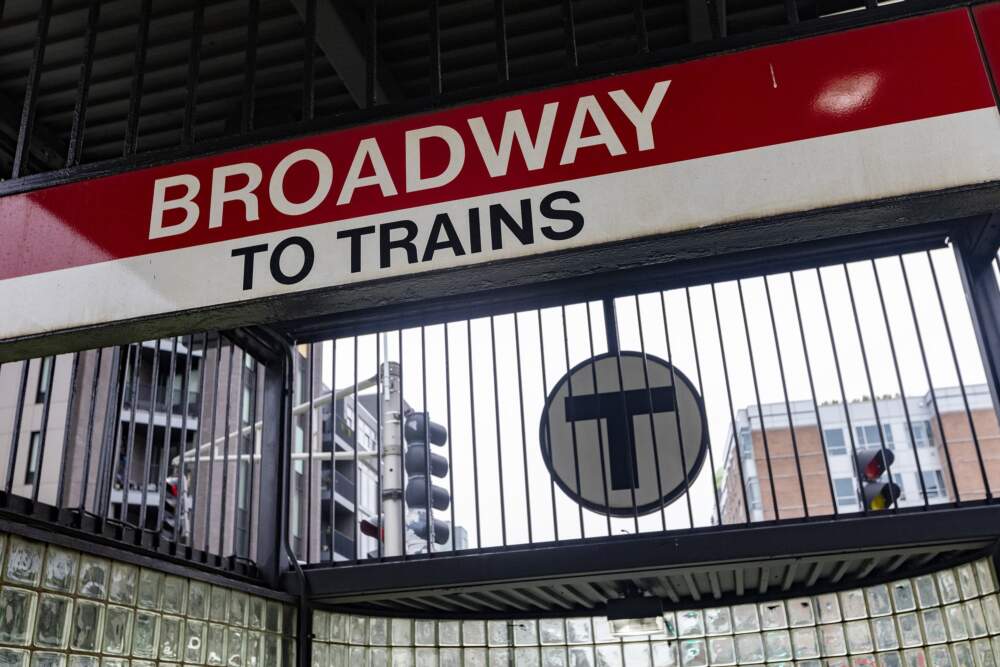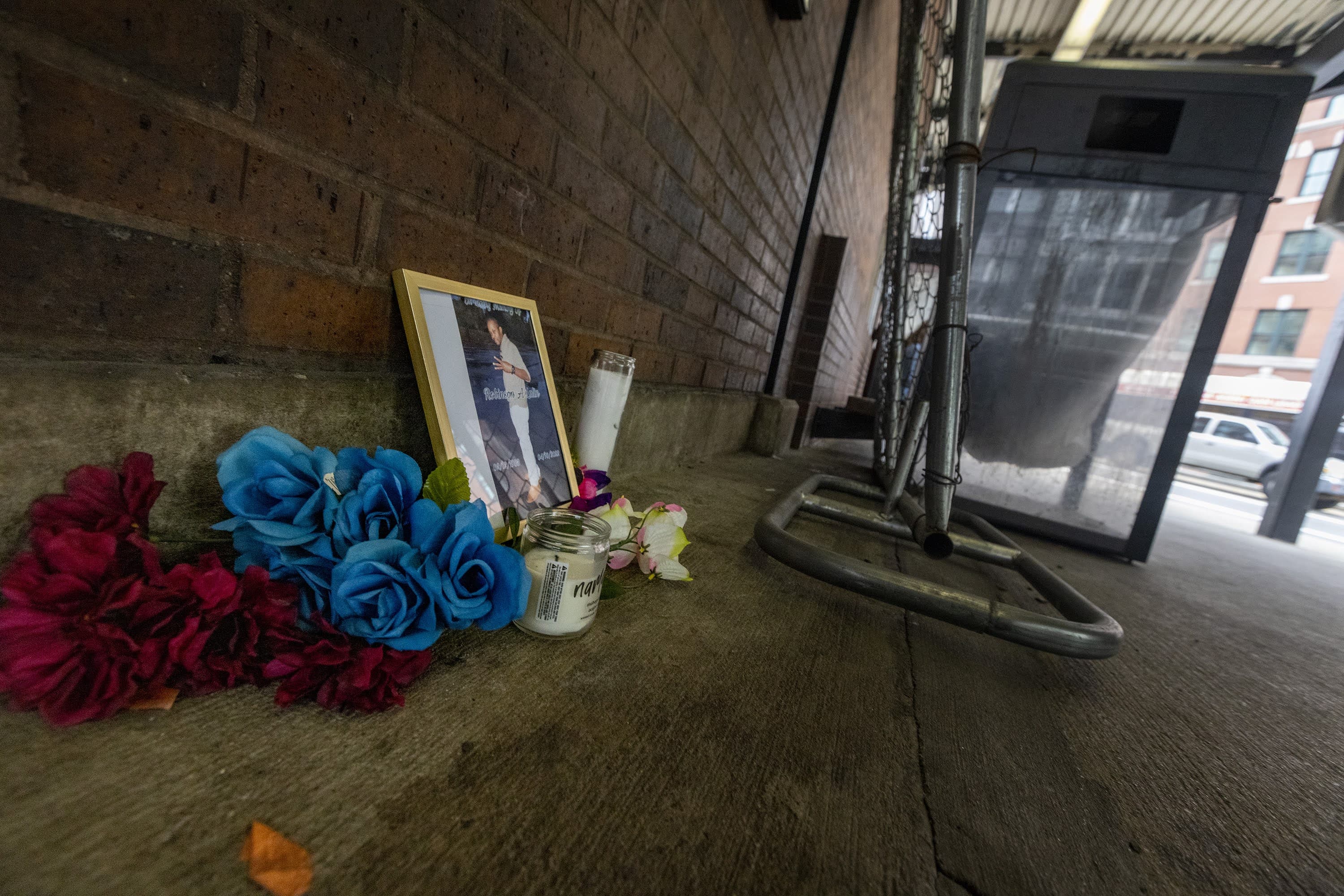Advertisement
Dragging death on Red Line likely caused by short circuit, federal report finds

A short circuit on a Red Line train prevented a failsafe from triggering and allowed the vehicle to leave the station while a passenger was trapped in a door, federal investigators concluded while describing a pair of other missteps in the fatal incident.
The National Transportation Safety Board on Tuesday deemed the short circuit the "probable cause" of the April 10, 2022 tragedy that killed Robinson Lalin.
Red Line trains like the one involved in the incident are equipped with interlock circuits that disable propulsion if any passenger door is open, including if the door is blocked. But an NTSB investigation of the vehicle in question found that protruding wire strands touching a mounting screw created a short circuit, effectively allowing the train to move before its doors fully closed.
"Under normal operating conditions, the passenger door interlock circuit would have prevented train propulsion if a door obstruction was detected or the doors were open," the agency wrote in a 10-page report. "However, the short circuit that bypassed the passenger door interlock circuit allowed the train to proceed even with the passenger's upper body obstructing the ... railcar doors."
The agency tested its entire Red Line fleet within 72 hours of Lalin's death and found no similar issues, according to the NTSB. An MBTA spokesperson said similar tests performed on all Orange, Blue and Green Line vehicles did not identify another instance of the problem.
Investigators determined the short circuit occurred some time after the master controller was rebuilt in 2017. The NTSB said that at the time of the incident, the MBTA's preventative maintenance did not include an inspection procedure to examine the door interlock circuit's functionality.
After the incident, the T updated its maintenance process to include testing to ensure trains could not begin travel while doors were open. The agency also implemented a new electrical isolation method on the relevant terminal boards to ensure "protruding wires do not unintentionally complete a short circuit," the NTSB wrote.
The report, which builds on the NTSB's preliminary findings issued in May 2022, said Lalin and several other passengers boarded a Red Line train at Broadway Station just before 12:30 a.m. on April 10, 2022. Lalin attempted to disembark while the train was departing when the doors closed on his "upper body on his right side." He ran alongside the train while trapped in the door, then collided with a wall at the end of the platform and was killed, the NTSB said.

MBTA departure policy requires operators to stick their heads outside of the operating cab and make sure the platform is clear before departing and to check that pilot lights are off, which indicates that passenger doors have closed, according to the report.
The NTSB found that the operator of the train in question conducted a visual inspection of the platform but pulled her head back into the cab before the pilot lights above the malfunctioning door turned off, "contrary to MBTA departure procedures."
An MBTA spokesperson said the operator no longer works for the T, but did not answer a follow-up question if the operator resigned or was terminated.
The NTSB also found a 19-foot "blind spot" in a camera view of the station platform, which blocked sight of the door in which Lalin became trapped. If the operator was using a monitor with that camera feed to check the platform, "it was unlikely that she would have seen [Lalin] stuck in the doors," investigators said.
MBTA officials in the wake of the accident began conducting regular audits of those cameras and monitors, referred to as single-person train operation (SPTO) cameras. T spokesperson Lisa Battiston said the agency has upgraded and replaced 31 of 55 monitors with "larger, brighter and easier to clean" versions, focusing first on those in "the most critical locations."
"This includes upgrading and replacing both SPTO monitors at Broadway station," Battiston said. "The MBTA has also been implementing a Legacy Camera Replacement project, funded by a Department of Homeland Security grant, to phase out aging equipment. Additionally, the MBTA has also improved communications between motor persons and the team responsible for maintaining the cameras and monitors to ensure that any issues are resolved quickly."
MBTA officials previously said the train car involved in Lalin's death was part of the "Type 1" series, which began operations in 1969 and 1970 and were then rebuilt between 1985 and 1988.
All 1500 series MBTA rail cars are set to be retired by March 2024, the NTSB wrote in its report.
The fatal incident triggered a flurry of new scrutiny on the MBTA and its myriad woes. Shortly afterward, the Federal Transit Administration launched a nearly unprecedented safety investigation that resulted in a string of federal corrective action orders. Work remains ongoing to address those problems and build out the T's safety-related workforce.
Lalin's family in March filed a wrongful death lawsuit against the MBTA, the Boston Globe reported.
"The MBTA would once again like to extend its deepest condolences to the Lalin family regarding this heartbreaking incident," Battiston said in a lengthy statement Tuesday, later adding, "The safety and well-being of every MBTA rider is of the utmost importance. The MBTA has been working aggressively to improve safety at all levels and has been advancing safety-related objectives with billions of dollars in infrastructure and vehicle investments in recent years."